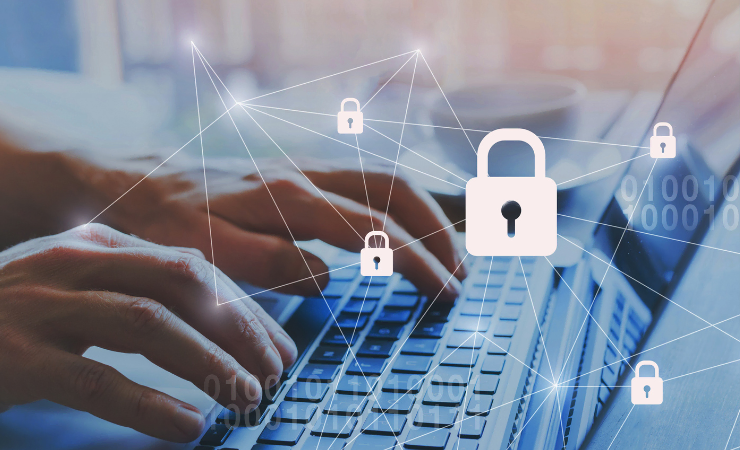Securing your NETGEAR router is essential to implementing a comprehensive network security plan and defense-in-depth strategy. With cyber threats constantly evolving, following security best practices to fortify your router is more important than ever. This article outlines key steps NETGEAR users should take to strengthen the router admin interface and overall home network protection.
In this page
Why Securing Your Home Network Matters More Than Ever?
The threat landscape has expanded drastically in recent years. Attackers ranging from ransomware gangs to state-sponsored advanced persistent threat (APT) groups now target home networks and devices in addition to large enterprises. Unsecured routers and smart home gadgets are often compromised to create vast botnets.

Did you know? According to a study by IBM, the average data breach cost for individuals reached $4.24 million in 2021, up 10% from the previous year.
Implementing proactive security measures on your NETGEAR router will mitigate the most common infection vectors. NETGEAR routers provide customizable firewall policies, updated firmware, wireless encryption, VPN capabilities, and other network security features to help users easily harden their setups. Activating these options creates a layered security approach that significantly reduces your risk of compromise.
Following best practices also ensures you don’t accidentally expose your network due to default NETGEAR settings, prioritizing ease of use out of the box over locking things down. No one wants to be the “open house” on the block for hackers!
Step 1: Change Default Admin Credentials Immediately
When setting up a new NETGEAR router, one of the first steps is configuring the admin username and password. The default login credentials are published online and can easily be found in manuals or with a quick web search. Attackers frequently access routers using default credentials and trying combinations of common usernames like “admin” and default passwords like “password” or the Wi-Fi password printed on the router label.
To prevent unauthorized access, immediately change the admin username and password:
- Set a strong password at least 12 characters long using upper/lowercase letters, numbers, and symbols.
- Avoid common or easily guessed password phrases
- Do not reuse the same admin password as your Wi-Fi password
- Change both admin credentials even if only one currently shows a default value
Saving new credentials reduces the odds of a brute-force login attack succeeding. Store the new username and password in a safe place, like a password manager. Your pet’s name, followed by “123,” isn’t a strong password!
Step 2: Enable WPA3 Wireless Encryption for Strongest Wi-Fi Protection
Outdated or weak wireless encryption standards greatly increase vulnerability to hackers in the range of your Wi-Fi networks. NETGEAR routers support the latest WPA3 protocol for enhanced security over the outdated WPA2 standard.
Key WPA3 improvements include:
- More robust protection against brute force password guessing attacks
- Individual data encryption, even when using weaker preset passwords
- Easier and more secure connection of smart home devices via Easy Connect
We recommend immediately upgrading to WPA3-Personal encryption under the router’s wireless settings instead of outdated WEP or WPA alternatives. WPA3 is the cutting edge for Wi-Fi security and prevents many common exploits targeting home networks.
Pro Tip: WPA2-PSK with a strong password is generally still sufficient for a guest network. See our guide on setting up a Netgear Router Guest Network for more details.
Step 3: Configure Built-In Firewall for Deep Traffic Inspection
NETGEAR routers include a firewall utilizing Stateful Packet Inspection (SPI) to filter incoming and outgoing traffic at the IP/port level. The firewall checks packets against configured rules to block malicious traffic while allowing benign activities.
Key protections to enable under the firewall settings include:
- SPI firewall – Deep packet inspection to track connection state and block threats
- DoS prevention – Protection against denial of service flood attacks
- Block anonymous Internet requests – Prevents shady scans from anonymous sources
- Disable multicast streams – Stops dubious video/audio feeds from outside
- Remote management – Disable admin access from outside your home network
You can further tune the firewall by setting up port forwarding rules to open only specific ports needed by games and applications. However, avoid activating Universal Plug and Play (UPnP), which can unintentionally expose your network. UPnP is like giving your house keys to strangers and hoping they don’t rob you.
Step 4: Encrypt Traffic and Hide the IP Address with a Built-In VPN
For connecting from public Wi-Fi hotspots or hiding your browsing from your ISP, NETGEAR routers with VPN support allow for the encryption of some or all traffic. VPNs tunnel your data through an intermediary server, obscuring the source IP and preventing snooping or throttling.
Router VPN setup involves:
- Signing up for a VPN subscription service
- Configuring the NETGEAR router as a VPN client with your account credentials
- Routing your desired devices through the encrypted VPN tunnel
This shields browsing on those devices from prying eyes. Some NETGEAR routers even have VPN server capabilities to handle routing duties and client connections directly on the router. Be your own VPN boss!
Step 5: Enable Additional Security Layers for Defense-in-Depth
To further harden your NETGEAR router:
- MAC address filtering – Whitelist only known devices to block others
- Firmware update notifications – Ensure timely patching against flaws
- Disable UPnP – Prevent automatic port forwarding changes
- Guest network – Isolate visitors from the main network and devices
- NETGEAR Armor – Enable extra threat detection and cybersecurity
Ongoing router hardening creates a layered security approach that significantly frustrates attackers. Most exploits target single vulnerabilities rather than chained flaws, making a defense-in-depth strategy highly effective.
Fun Fact: The average home has 25 connected devices. Make sure yours aren’t the weakest link!
Real-World Attack Scenarios and Router Security Features
To understand how router protections mitigate common threats, examine a few real-world attack examples:
| Attack Scenario | Router Security Feature |
|---|---|
| Brute force attack to crack weak Wi-Fi password | WPA3 encryption prevents offline password-guessing |
| Unauthorized remote login to admin panel | Disabled remote management blocks WAN access |
| Unsecured smart home device exploited as botnet zombie | Guest network isolates IoT devices from LAN |
Troubleshooting Common Security Issues
When strengthening router security, users may encounter certain problems like:
“Weak security” warning in settings
Solution: Change encryption from WEP or WPA to WPA2 or WPA3
Can’t access the admin page after enabling HTTPS
Solution: Use “https://” instead of “http://” in address bar
Implementing multiple proactive security measures creates a robust defense against threats targeting NETGEAR routers and connected home networks. The cybersecurity best practices outlined ensure user privacy and data protection against spying.
Check your router often for new firmware updates, re-assess any custom port forwarding rules not needed, and periodically change Wi-Fi passwords. Your NETGEAR router will provide safe, reliable connectivity for years with a customized and layered approach tailored to your environment. Stay safe out there!

